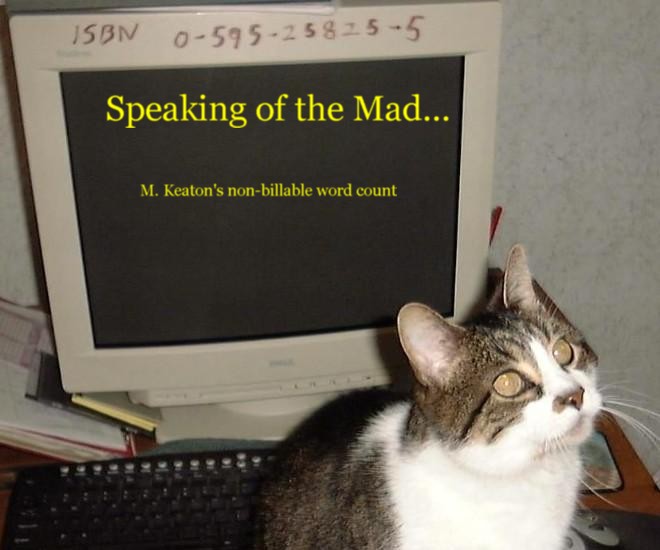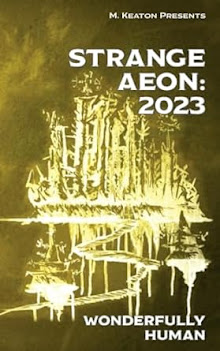(For the month of March, we have been open only to submissions by repeat submitters in honor of their support and interest in the anthology. Starting today, we will be accepting submissions from everyone. Thank you.)
Strange Aeon: 2024 (Mythic Art) is a continuation of the Strange Aeon anthology series. As always, I want good, solid stories in a cosmic horror/Lovecraftian vein. I specifically say Lovecraftian rather than Cthulu because I’d like stories across the entire Mythos, including additions by the original group of Mythos authors like Robert Howard and Clark Ashton Smith. [1]. In fact, I’d like to use more stories that do not have specific Lovecraftian references and that move away from the traditional Lovecraft style and voice. Try to avoid pastiche and tell fresh new stories in your own settings. Style preference applies to gore and sex as well: think early Weird Tales, no excessive language or explicit sexual references. (You do not have to remove all profanity from your submission—I can read around it—but, if your story is accepted, you will be required to remove it from the final version.)
I’m not overly concerned about length. 5,000 to 10,000 words is preferable but I know that horror doesn’t always lend itself to a strict word count and I’ll look at any length. (I think the longest pieces that have been used have been just over 20,000 words and the shortest about 2,000.) I don’t care about submission formatting as long as it’s legible, clean copy. Electronically, I need the manuscript attached as an RTF, DOC, or DOCX file. Please submit to the email address mkeatonauthor (at) gmail (dot) com with the word Submission in the header.
Important Notes:
1] Authors new to working in the Mythos may find this a bit confusing. Let me be clear: do not use characters, creatures, book names, or anything else from modern authors. Modern authors are under copyright. Lovecraft and the other members of his original “circle” are largely under public domain. Please, do not accidentally infringe on anyone’s copyright. Always check first. In addition, gaming rules and supplements are also copyrighted works and should not be used. If in doubt, only use Lovecraft’s own work as a source just to be on the safe side. Better yet, create your own. This is always important when writing but especially in the murky pseudo-shared world of the Mythos where the lines are more difficult to see. If you questions have or concerns about this, a quick internet search should tell you what you need to know. (One exception is if you wish to include Cobalt Green milieu references. Any Cobalt Green tie-ins should be queried first but since I own the copyrights, I also have the leeway to grant usage rights. Nevertheless, I would still rather see your original ideas.)
3] To better clarify the type and style of story desired, I have placed here a copy of the introduction from the 2023 anthology.
We stand at the end of a long hallway that stretches back into the darkness of campfires and told tales. It has a million doors of style and theme, of preference and presentations, of historical trends and fads, and eternal truths of the human experience.
But it is not tonight’s destination.
There is also a staircase leading down into the basement of splatterpunk and softcore tentacle porn—prurient titillation disguised as literature. It is a desperate place, a place to hide and wallow. We keep this door locked.
No, we will find our sustenance elsewhere, behind this hidden panel and up the attic stairs. Be careful. The stairway is steep and uneven, deliberately so—for only the work of those nimble enough to climb them is acceptable for this rare gallery. Each step is a burden, an additional task imposed upon the wordsmith to elevate their work from the common horde. No excessive gore. No sex. Even the use of coarse language is restricted. Ours is a heady vintage indeed; only stories that survive on their core merits reside here. Make no mistake, they are not simplistic children’s tales. They are pure storytelling with no reliance on cheap props.
Mind the last two steps—they are perhaps the steepest. They represent two of the best copy editors in the business: She Who Must Not Be Named and She Who Should Have Been Obeyed.
And here, at last, is our gallery. But a gallery of what? Of horror? Of dark fantasy? Of the simply weird? I honestly am not sure. There are labels aplenty—Lovecraftian, Cosmic, Quiet—but none of them truly seem to fit. Many of the labels imply desperation and nihilism, despair and surrender. These stories are certainly not of such lazy cowardice. A tale in which the participants whine until the monsters eat them all is no tale at all. Nor are these stories of the insignificance of man. Against the backdrop of the great expansive universe, man may be small, but he is not irrelevant. So what are these stories? What to call them?
If there must be a label, let it be Legacy. For that is what these exhibits are, the legacy of the pulps, of a time in storytelling when most genres of today did not exist and men told tales as wild as they dared, pushing the edges of their imaginations and crafting entirely new myths out of whole cloth. It was an ambitious time of ambitious writers. It was a time of writers like Lovecraft who melded science fiction with horror even as he told tales from the world of dreaming itself. Clark Ashton Smith, in rejecting the concept of the unnamable and indescribable horror, brought to bear the full arsenal of his descriptive skills honed by his work in painting and sculpture, giving us some of the most amazing vistas of lost worlds, dying lands, and mythic tales preserved in fiction. Robert Howard fused two-fisted action and cosmic horror to create heroes that live in the imagination to this day. And those are just the most commonly know names; there were legions of lesser lights, forgotten men, and followers through the ages.
Welcome, then, to my attic gallery of Legacy tales. Horror, myth-making, fantasy, weird—call them what you will—but I invite you to wonder at their ambition and marvel at their reach. Your time will not be wasted.
M. Keaton




















